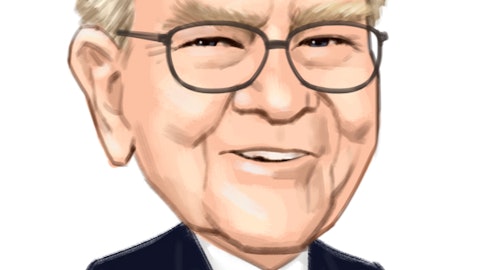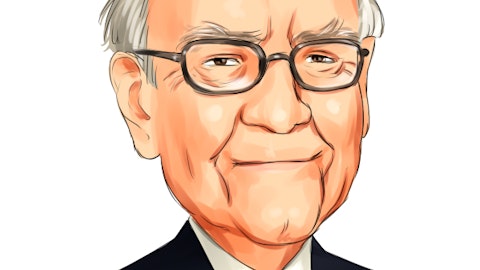And in finished goods, even though we need to increase inventory in certain spots where the inventory service levels are still low, we still have a lot of opportunity to rebalance our inventory across the network. I think one of the consequences of the pandemic, the demand volatility is that we started to have inventory straight in the wrong warehouses to meet the demand. And that takes time to sort itself out, right, because of actual cost of product and shipping items across the network. So because of these effects and all the investments that we have made in the past two years to automate demand forecast, we are investing a lot of resources in better supply planning. We are — we have a big project starting — that already started to network simplification.
So the combination of these investments, plus the rebalance of the network, plus we going back to the more historical levels of averaging raw and package materials should start to system recovering inventory starting ’23, but — or into the future.
Bryan Spillane : So I guess this was kind of bridging that now to maybe how we should be thinking about free cash flow and free cash flow conversion for ’23. Can you give us a little bit of perspective on, I guess, capital spending? Will inventory or working capital be a tailwind? Like can we get back to more normal free cash flow conversion in ’23? Or is it still going to be somewhat, I guess, subdued relative to previous years?
Andre Maciel : So free cash flow will be better than 2022. We were still not going to be in the long-term algorithm of 100%, and that’s in great part because of CapEx investments. As we have said as well during — when we unveiled the long-term algorithm, we are investing for growth. And we have stepped up investment in CapEx. You have seen in 2022, we are spending a little more than $900 million, which is a big increase versus $700 million, $750 million that were in the past. We are ramping up this again in 2023 and 2024 as part of our long-term plan. And then we should go back down to closer to 3.5% of net sales starting 2025. That’s the current perspective. So when the CapEx starts to come down, that will help us to give the step-up change to go back to achieve the 100% as we said the long-term outlook. So this year, I mean — if you want to expect something this year, it should be like about 80% or so is going to have addressable back in line.
Operator: Our next question comes from Chris Growe with Stifel.
Chris Growe: I just had a question for you in relation to promotional spending. And you had some data and some charts that showed it was down since 2019 and down more than your branded competition. I just want to get a sense of — do you expect to increase that? Is that kind of tied to service levels as those improved throughout the year? And then also to better understand what’s the appropriate bogey for that level of rebuilding promotional spending? So what portion of that 5% decline you show in 2019 should rebuild? You’ve got some good data and capabilities now. Can you be more efficient with promotional spending? I think the answer is yes, but just want to get a little more color on that.
Miguel Patricio : Maybe, Andre, you can start and then Carlos comment specifically in U.S.





